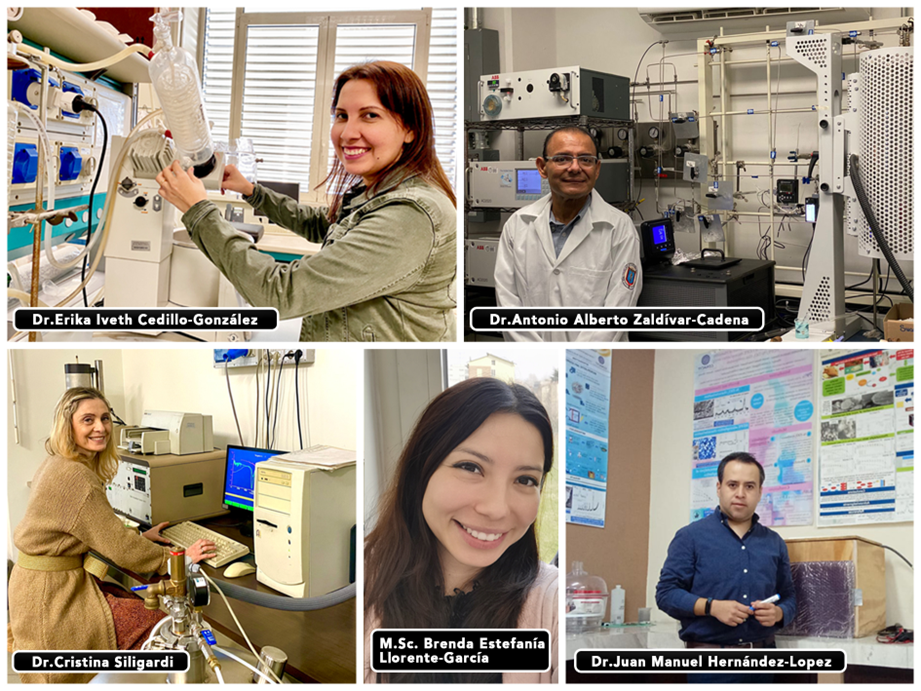Need Help?
2 February 2023
Coatings 2022 Best Paper Award—Interview with the Winners
We are pleased to announce the winners of the Coatings 2022 Best Paper Award. All the papers published in 2020 in Coatings (ISSN: 2079-6412) were considered for the award. After a thorough evaluation of the originality and significance of the papers, citations, and downloads, two winners were selected. The papers were selected after a thorough evaluation by the journal Award Committee led by the Editors-in-Chief, Dr. Alessandro Lavacchi and Prof. Dr. Wei Pan. We invited one of the winning teams for an interview and discussed their academic research stories and attitudes toward Open Access publishing.
The recipients of the Coatings 2022 Best Paper Award are as follows:
Review: “Introduction to Plasma Electrolytic Oxidation—An Overview of the Process and Applications”
by Frank Simchen, Maximilian Sieber, Alexander Kopp and Thomas Lampke
Coatings 2020, 10(7), 628; https://doi.org/10.3390/coatings10070628
Article: “First Insights into Photocatalytic Degradation of HDPE and LDPE Microplastics by a Mesoporous N–TiO2 Coating: Effect of Size and Shape of Microplastics”
by Brenda Estefanía Llorente-García, Juan Manuel Hernández-López, Antonio Alberto Zaldívar-Cadena, Cristina Siligardi and Erika Iveth Cedillo-González
Coatings 2020, 10(7), 658; https://doi.org/10.3390/coatings10070658
Biographical statement of the winning team (article):
M.Sc. Llorente-García completed her master’s degree in sustainable processes in 2020 at the Universidad Autónoma de Nuevo León (UANL, Mexico). Her thesis was based on the photocatalytic removal of microplastics from water using TiO2-based materials.
Dr. Hernández-López is an Associate Professor of the Chemical Sciences Faculty of UANL. His research focuses on studying materials with industrial interest to improve their properties and to ensure their ability to eliminate emerging contaminants.
Dr. Zaldivar-Cadena is an Associate Professor of the Civil Engineering Faculty of UANL. His research focuses on hydrogen storage in metal alloys and bioreceptive cementing materials.
Dr. Siligardi is a Full Professor at the Department of Engineering "Enzo Ferrari" (DIEF) of the University of Modena and Reggio Emilia (UNIMORE, Italy). Her activity focuses on functional and structural ceramic materials. She was the coordinator of several international and national projects.
Dr. Cedillo-González is a researcher from the DIEF department of UNIMORE. Her research focuses on the multidisciplinary development of sustainable materials for the construction and environmental remediation of microplastic pollution. From 2017 to 2021, she served as an Associate Professor at UANL. She was the PI of two projects granted by the Mexican National Council for Science and Technology and the Mexican Ministry of Public Education.

1. What’s your current research and why did you choose this research field?
Our research currently focuses on materials science, with particular attention paid to the remediation of aquatic contamination by micro- and nanoplastics using photocatalytic processes. We chose that field because this kind of environmental pollution is already ubiquitous, and many remediation strategies can be designed from a materials science point of view.
2. Which research topics do you think are of particular interest to the research community in the coming years?
We consider that research topics of interest can be those related to the design of materials or new technologies with the lowest possible environmental impact. We also believe that designing materials that can directly or indirectly contribute to tackling climate change and water pollution can also be of interest.
3. Have you encountered any difficulties when you conducted the research? How did you overcome them?
The difficulties during this research were mainly related to the almost null availability of the scientific literature related to the topic (at the time the research was conducted). However, those difficulties allowed us to design our research from a materials science point of view. Thanks to this, the work was one of the first publications available in the field.
4. What qualities do you think young scientists need?
Scientific writing and grant proposal writing skills, project management, team leading and management, and critical thinking.
5. When and how did you first become acquainted with Coatings?
The story began in 2017, it was the first time our research group published a paper in this journal.
6. We are an Open Access journal. How do you think Open Access impacts the readers and authors?
As authors, we acknowledged that Open Access would allow our research to reach a wider audience. Indeed, Open Access allowed us to reach not only other scientists (at any carrier stage) but also other audiences that may not directly conduct research but perform science communication.

